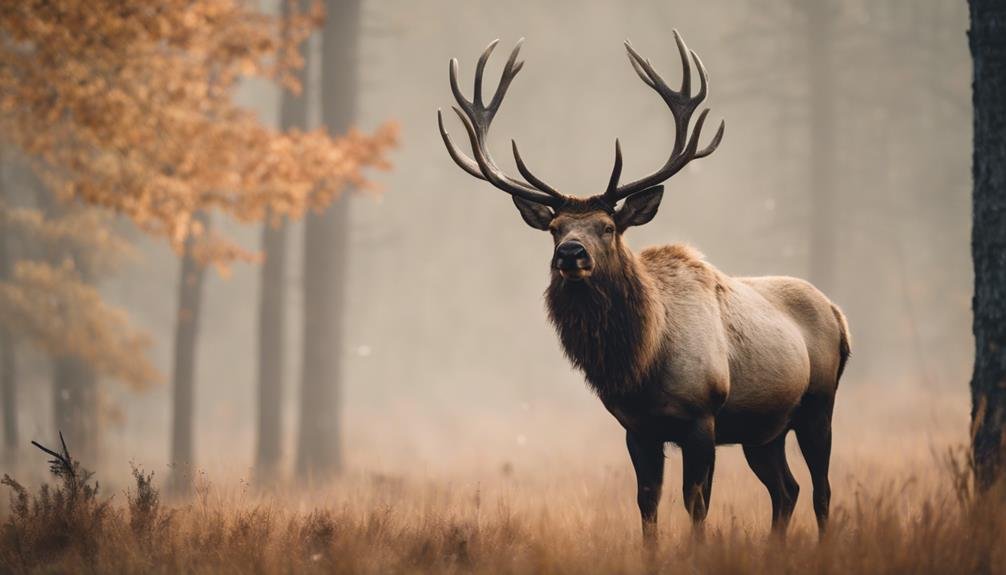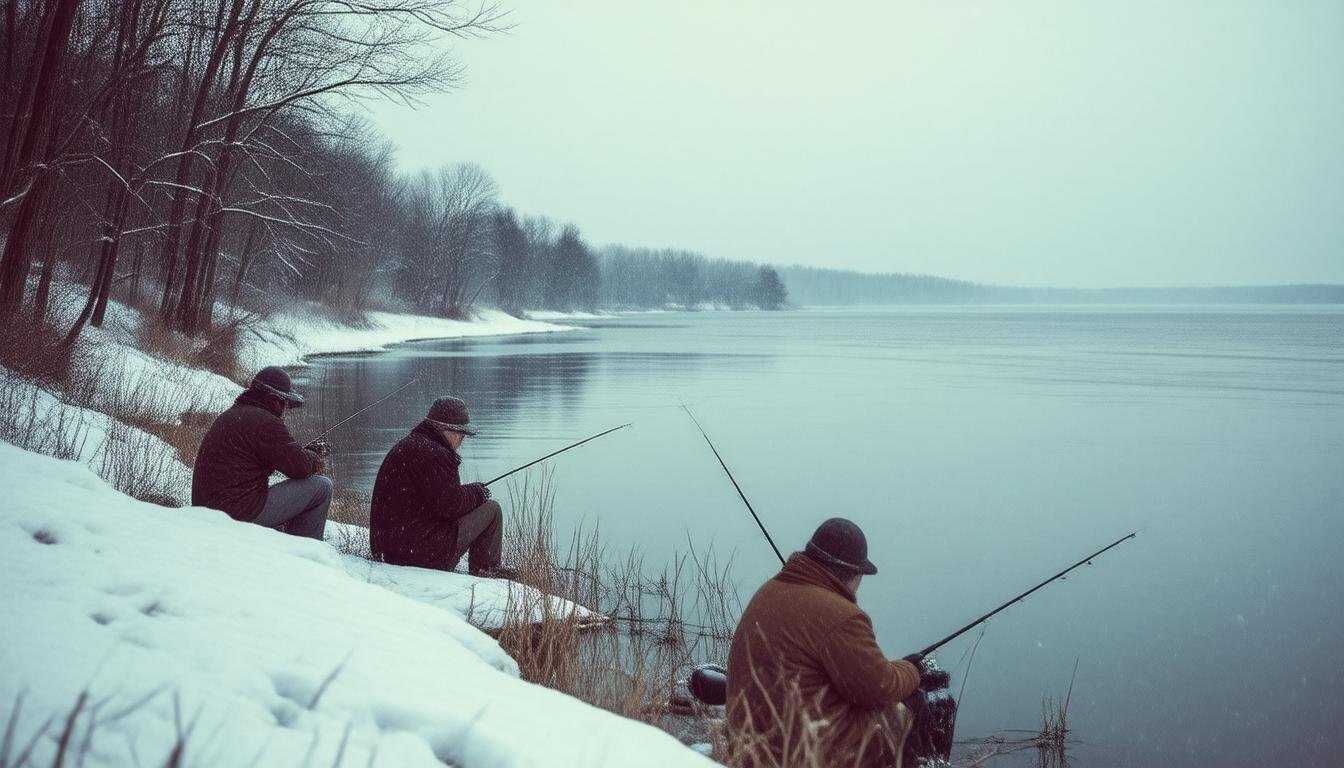To bag a trophy elk, mastering a range of skills is imperative. Understanding elk behavior and migration patterns is pivotal, as is developing effective scouting strategies and calling techniques. Physical conditioning is also indispensable to traverse rugged terrain and keep up with elk. In addition, prioritizing gear essentials and maintaining equipment is necessary for a successful hunt. By combining these skills, hunters can increase their chances of harvesting a trophy bull elk. From anticipating seasonal movements to adapting to changing habitats, the path to success is paved with knowledge and preparation – and it all starts with a deeper understanding of what drives these majestic creatures.
Key Takeaways
- Mastering elk calling techniques, including bugles, chirps, and grunts, increases chances of attracting a trophy bull elk.
- Analyzing maps and identifying key habitat features, such as meadows, forests, and corridors, helps pinpoint areas of high elk activity.
- Understanding elk migration patterns and seasonal movements allows hunters to anticipate and prepare for optimal hunting times.
- Prioritizing physical conditioning through endurance, strength, and cardio workouts ensures hunters can traverse rugged terrain and keep up with elk.
- Effective scouting strategies, including identifying potential routes and observing habitat features, increases chances of a successful hunt and appreciation for elk.
Understanding Elk Behavior Patterns
Elk's seasonal migrations, driven by the quest for food and suitable habitats, are a hallmark of their behavior patterns, which are essential for hunters to understand in order to increase their chances of a successful hunt. Elk are highly social animals, with a complex communication system that involves vocalizations, body language, and scent marking. During the rut, bulls engage in a unique form of communication, known as "bugling," to establish dominance and attract mates. Understanding elk socialization and communication patterns can help hunters identify key gathering areas, such as meadows and watering holes, and anticipate their movements. By recognizing these patterns, hunters can increase their chances of a successful hunt and develop a deeper appreciation for these magnificent creatures.
Effective Scouting Strategies
By understanding elk behavior patterns, hunters can now focus on developing effective scouting strategies to pinpoint key areas of elk activity and increase their chances of a successful hunt. To do this, hunters should identify potential scouting routes, such as game trails, ridges, and water sources, and analyze maps to identify key habitat features like meadows, forests, and corridors.
| Scouting Strategy | Description |
|---|---|
| Map Analysis | Identify key habitat features, such as meadows, forests, and corridors, to pinpoint areas of high elk activity |
| Scouting Routes | Identify game trails, ridges, and water sources to locate elk migration routes and habitat usage |
| Habitat Observation | Observe habitat features, such as food sources, water sources, and escape routes, to understand elk behavior patterns |
| Pattern Identification | Identify patterns of elk movement and behavior to anticipate elk activity and plan the hunt accordingly
Mastering Elk Calling Techniques
Effective elk calling techniques require a deep understanding of the various vocalizations elk use to communicate, including bugles, chirps, and grunts, which can make all the difference in a successful hunt. Mastering elk vocalization is key to convincing elk that you're one of them. Elk calling strategies involve mimicking these sounds to lure elk into range. During the rut, bull elk vocalize frequently, making it an ideal time to use calling strategies. A well-executed bugle can spark a bull's interest, while a soft chirp can calm a wary cow. By understanding the nuances of elk vocalization, hunters can develop effective calling strategies to increase their chances of bagging a trophy elk. Practice and patience are essential in mastering elk calling techniques, but the payoff can be substantial.
Gear Essentials for Elk Hunting
While mastering elk calling techniques can increase the chances of a successful hunt, having the right gear is equally important for traversing the rugged terrain and unpredictable weather conditions that often accompany elk hunting. A sturdy Elk Backpack is essential for carrying all the necessary gear, including clothing, optics, and first aid kits. Regular Gear Inspections are vital to verify that all equipment is in good working order. This includes checking rifle scopes, testing flashlights, and inspecting waterproof gear. A well-maintained backpack and gear can make all the difference between a successful hunt and a disastrous one. By prioritizing gear essentials, hunters can focus on the thrill of the hunt, rather than worrying about equipment failures.
Physical Conditioning for Success
One critical aspect of elk hunting that is often overlooked is the physical conditioning required to traverse the rugged terrain and keep up with these agile creatures. Elk hunting demands a high level of fitness, and neglecting physical preparation can lead to a disappointing and potentially dangerous experience. A well-structured fitness training program should focus on endurance building, strength gains, and cardio workouts to improve overall stamina. Incorporating flexibility exercises can also help prevent injuries. Additionally, nutrition planning is essential to fuel the body for peak performance. By prioritizing physical conditioning, hunters can increase their chances of success and enjoy a more rewarding elk hunting experience.
Reading Elk Migration Patterns
Understanding elk migration patterns is essential for hunters, as it allows them to anticipate and prepare for the elk's seasonal movements, increasing their chances of a successful harvest. Elk migrate to higher altitudes in spring and lower elevations in fall, retreating from deepening snow. Winter ranges, typically located in lower elevations, provide essential habitat for elk during harsh winter months. Habitat fragmentation, resulting from human activity and natural barriers, can disrupt elk migration patterns, making it imperative for hunters to understand these disruptions. By recognizing these patterns, hunters can position themselves in areas with high elk concentrations, increasing their chances of success. A deep understanding of elk migration patterns is key for a successful and fulfilling hunting experience.
Trophy Elk Hunting Tactics
As hunters familiarize themselves with elk migration patterns, they can now focus on refining their hunting strategies to target trophy elk, a pursuit that demands a combination of skill, patience, and knowledge. When it comes to trophy elk hunting, public land offers ample opportunities, but private ranches can also provide access to prime habitat. Bull elk, with their impressive antlers, are the ultimate prize. Late season hunting can be particularly productive, as elk congregate in lower elevations, making them more accessible. To increase chances of success, hunters should focus on areas with high elk concentrations, such as wintering grounds and migration corridors. By combining knowledge of elk behavior with strategic hunting tactics, hunters can increase their chances of harvesting a trophy bull elk.
Post-Hunt Care and Preparation
After a successful elk hunt, meticulous post-hunt care and preparation are essential to guarantee the quality and safety of the harvested meat, while also showcasing respect for the animal and the hunt. Proper field dressing is imperative, facilitating the carcass to be cooled quickly to prevent spoilage. This involves making a shallow incision around the anus, then cutting up to the base of the tail, being careful not to puncture the stomach or intestines. Meat storage is equally important, with the goal of maintaining a consistent refrigerator temperature below 40°F (4°C). The carcass should be skinned and quartered, then wrapped tightly in plastic bags or vacuum-sealed to prevent moisture accumulation. By following these steps, hunters can guarantee their hard-earned trophy provides delicious and safe table fare.
Frequently Asked Questions
What Is the Average Lifespan of an Elk in the Wild?
In the wild, elk typically live up to 10 years, with rare instances of 15-year lifespans, as habitat loss and predation from wolves, mountain lions, and bears contribute to elk mortality, substantially impacting habitat dynamics.
Can Elk Be Found in Areas With High Human Populations?
Can elk thrive in the shadows of skyscrapers? Yes, urban elk populations exist, often resulting from habitat fragmentation, where humans and elk coexist in fragmented habitats, prompting innovative management strategies to mitigate human-elk conflicts.
Do Elk Migrate Alone or in Small Groups?
Elk often migrate in small groups, driven by herd dynamics, but solo travelers are common, particularly among mature bulls and cows with calves, as they adapt to changing habitats and food sources.
Can Elk See or Smell Hunters From a Distance?
'Cut to the chase,' when it comes to elk senses, their visual acuity is impressive, spotting hunters at 1,000 yards, while their olfactory limits detect scents from miles away, making stealth a vital aspect of hunting strategy.
Are Elk More Active During the Day or at Night?
Elk exhibit crepuscular behavior, being most active during twilight hours, particularly during dawn patrol and early morning. However, they may also engage in moonlight feeding, suggesting that their activity patterns can vary depending on the time of year and environmental factors.
Conclusion
Mastering the art of elk hunting requires a multifaceted approach. By grasping elk behavior patterns, employing effective scouting strategies, and mastering elk calling techniques, hunters can increase their chances of success. Ultimately, selecting gear essentials, maintaining physical conditioning, and deciphering migration patterns are vital components of a triumphant hunt. In the final analysis, a deep understanding of these interconnected elements is essential for bagging a trophy elk, making the pursuit a true test of skill and perseverance.









